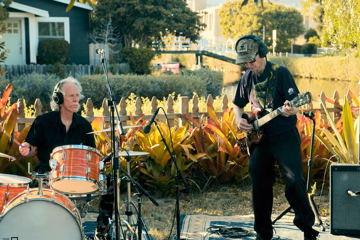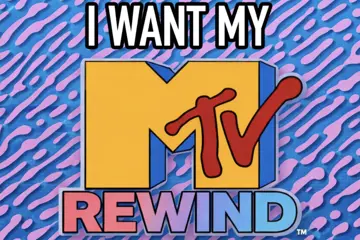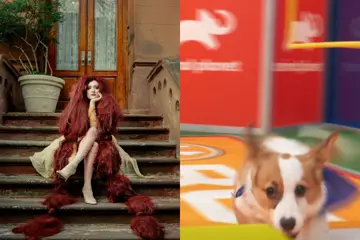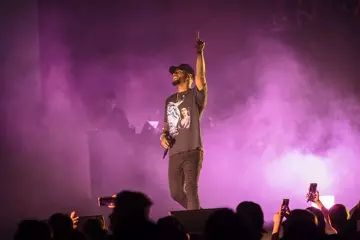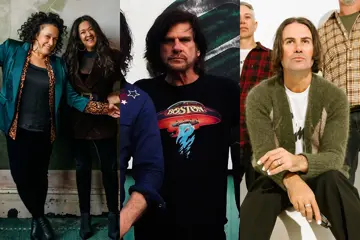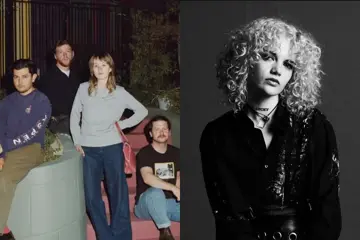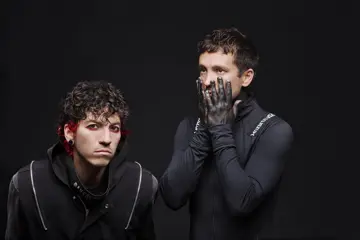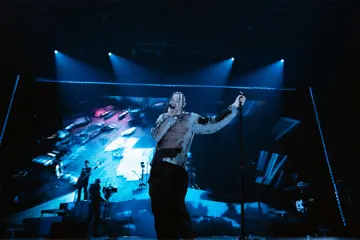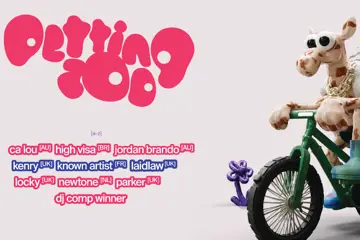JOHN WICK CHAPTER 3: PARABELLUM
★★1/2
Once upon a time, Theon Greyjoy killed an adorable puppy. From that inciting moment, one of cinema’s greatest, goriest, most glorious shrines to killing has grown. John Wick found a grieving Keanu Reeves — a hitman so lethal he’s become a Russian fairytale — killing 77 people.
In John Wick: Chapter 2, it was 128 people. In the freshly-released John Wick 3: Parabellum, all the calculation power of a supercomputer couldn’t tally the number of luckless souls who meet a grisly on-screen death.
And, in the John Wick-verse — its bizarre, baroque realm of assassins really does carry its own mythology — people don’t just die routinely. Sure, there’s your standard gunshots to the head or fight sequences that end with someone collapsed on the ground; the former involving faceless minions popping up like in a first-person shooter, the latter evoking Hong Kong kung-fu/gun-fu movies, and the way armies of fighters approach a hero one by one.
But people also die by knives, axes, swords. By belts, books, pencils. And, in Parabellum, the animal kingdom enters the fray: faceless goons getting kicked by horses and mauled by dogs. It’s the latter that’s the most striking entry in this franchise’s ludicrous depictions of combat: they’re not just run-of-the-mill mutts, but Halle Berry’s Dick-Biting Attack-Dogs.
Don't miss a beat with our FREE daily newsletter
Chapter 3 picks up right where Chapter 2 left off; the entire trilogy taking place in the span of but a few weeks. Where the original John Wick was full of generic moralising and emotion, each of its successors has become something more stylised, surreal, silly. The second flick unfolding its underworld of assassins, turning its hero into a James Bondian figure; someone who, wherever he goes, is known by all. The second flick furthered the notion of this entire shadow-world of assassins as existing in plain sight. Though, by the way train-station commuters remain wholly oblivious to the gunfights and bare-handed fatal beatings going on around them, I’m not ruling out some Matrix-esque reveal where it turns out this shadow-world is really some other world; a different simulation to our regular programming.
Here, the world of assassination is so vibrant/lucrative that it apparently requires luxury hotels on every continent, bustling phone-rooms full of tattooed women in matching outfits staffed in the dozens day and night, and an overseeing bureaucratic agency charged with making sure its franchisees obey company policy. Its currency is gold coins, whose baffling one-size-fits-all value is either deeply stupid or an incisive commentary on money and power, a coin redeemed for everything from a drink at the bar to a taxi ride to the removal of a corpse.
This Wick-verse is writ in the notion of honour among thieves. It’s essentially about the clash between individual moral codes and the moral codes of institutions or societies; at once valourising both living by the rules and breaking them. This flexible morality is, of course, all about killing. The series begins, in its first film, by wheeling out that classic action-movie-murder-spree morality: a tragic event ‘allows’ our hero to kill endless people without question or judgment. But, as the film goes on, the arcane conventions of this assassination nation are tilted so many ways that they no longer make sense. The only reason we’re cheering on Keanu Reeves as he’s dispatching endless people is, ultimately, because he’s Keanu Reeves. Woah.
In such, John Wick — and, especially, Parabellum — walks an uncomfortable line. They’re films obsessed with killing, giddy with all the wild, farcical ways with which it can dispatch faceless, nameless, oft-masked minions by the hundreds. It’s a series born out of the mind of a stunt double (Chad Stahelski) and a fight choreographer (David Leitch), and it shows: these are movies of assembled set-pieces, loosely strung together.
The presence, in Parabellum, of straight-to-video legend Mark Dacascos and The Raid’s Yayan Ruhian and Cecep Arif Rahman feeds into the notion that John Wick is a fanboy celebration of all things action. There’s balletic martial-arts choreography, a fight in a vintage weapons museum, a swordfight on the back of motorcycles, and a battle between ninjas and hobos. It’s utterly ridiculous, mostly played for comedy. A scene in which Keanu wanders into the desert, along sandy Saharan dunes, is a reminder that we’re deep in the weeds of fantasy, far from the concerns of reality.
Yet, something about this series feels utterly sociopathic. At a certain point, watching this endless parade of homicidal carnage becomes banal. The ‘inventive’ ways to cook up new on-screen deaths are the lure, but the deaths themselves are rendered utterly meaningless. Here, the value of a human life has the same currency as the value of a drink. Watching the John Wick series becomes a study in desensitivity. By the end of Parabellum, you’ve become like those subway commuters who don’t break stride when men carrying machine-guns stride past or someone is brutally beaten to death nearby.
It’d be great if this was some Hanekean commentary on our complicity as viewers, of how cinema is a tool of empathy, but screen violence toxically erodes empathy. On our way to catch trains, at the centre of our ever-so-busy lives, we care not for the victims in society’s margins. It’s a nice lesson to take, but clearly one the John Wick series isn’t out to teach. With its wealth-porn, gun-worship, and institutionalised ultraviolence, it’s not a rebuke of the horrors of Modern America, just a reassertion of the status quo.
THE REALM
★★★1/2
The tenor of Rodrigo Sorogoyen’s political thriller, The Realm, is set by a bubbling techno soundtrack, which evokes both its race-against-the-clock pulse and its satirical sense-of-humour. It’s a film about corruption, its many men in suits familiar from a raft of films made about fraud within the financial sector. Here, the corruption is theoretically in the world of politics, but — especially given its 2007 setting — it’s all about money: a host of heavies indicted for bribery, fraud, forgery, embezzlement, siphoning, the trafficking of influence and the peddling of favours.
Spanish leading-man Antonio de la Torre is the face of such a scandal, and forever at the centre of this bustling movie. Sorogoyen plays on de la Torre’s familiarity and charisma, tilting the moral lens, and employing revelation, so as to shift audience perspective on the protagonist. Is he a good man who made bad choices? A charismatic sociopath manipulating those around him? A victim of corruption, who, by outing the real evildoers, will ultimately clear his name?
These questions come to a head in a striking final sequence. After two hours of constant motion, various wild-goose chases, and use of the thriller’s familiar feeling of ever-mounting tension, everything stops at The Realm’s end. Our (anti-) hero sits down for a TV interview with Bárbara Lennie. As the two parry back-and-forth, a film about the slipperiness of morality finally finishes on a moment of unvarnished moral reckoning; Sorogoyen employing to-camera frontality to hammer home his point.
THE HEIRESSES
★★★1/2
At its simplest — both dramatically, and how it’ll be perceived — The Heiresses is a film about the reawakening of an elderly lady, whose cloistered existence opens up to new experiences, people, and feelings in a delightful late-in-life turn. At its most complex, though, Marcelo Martinessi’s film is a study of class; both in contemporary Paraguay and a more-universal fashion. Ana Brun and Margarita Irún play a pair of wealthy heiresses, who’ve lived together for over three decades in the same mansion; its state of current disrepair suggesting their downturn in fortunes. They’ve never worked a day in their lives, and their same-sex union has evidently remained above reproach, social status inuring them from scandal.
When Irún ends up in prison due to mounting debts, Brun turns into a taxi-driver for her coterie of wealthy old biddies; getting a (mild) taste of how the serving-class lives. When she meets Ana Ivanova’s young firebrand — who stands in contrast to her own meekness — her old heart awakens to new feelings. This is the story’s text, but beneath it is a subtext examining class, power, and politics. The inherited wealth of our two heiresses suggests a family history of collaboration with Paraguay’s post-war dictatorship; the spectre of colonialism forever lingering of any portrait of the moneyed living large on stolen South American lands. The awakening of its heroine isn’t just desire, but an awareness of lives beyond the bubble of privilege.
REPORTS ON SARAH & SALEEM
★★★1/2
‘Lovers divided by forces beyond their control’ is a familiar form of tragic romance. Reports On Sarah & Saleem muddies the morals by having the lovers not divided, but entangled; the concept of ‘division’, herein, far more complex. This, of course, speaks of its setting, and dramatic premise. Sarah, an Israeli married to a military higher-up, lives in West Jerusalem, running a small café. Saleem, a Palestinian in thrall to his wife’s family, lives in East Jerusalem, but has a shitty job delivering baked goods in the West, including to said café. When we meet them, the two are already entangled in an affair; their adultery not merely a betrayal of their respective spouses, but of their respective nations.
Eventually, their forbidden tryst is uncovered. Not by their aggrieved partners, but by investigative special-forces. Director Muayad Alayan manages to, largely, stick the landing of his great dramatic trick: making his characters both feel like relatable humans and symbols of a greater intractable conflict. Here, the question is, essentially, what are people most beholden to: Their desire? Their marriage? Their family? Their country? The truth? It’s an unanswerable inquiry, and one whose contradiction and complexity suits the film’s socio-political symbolism.

